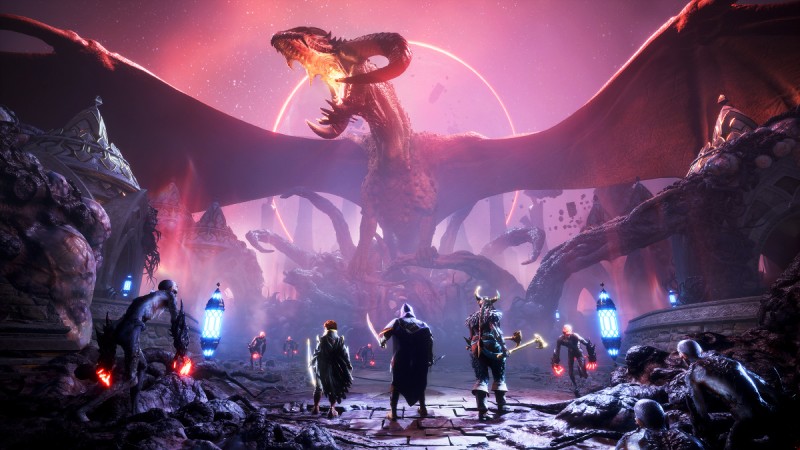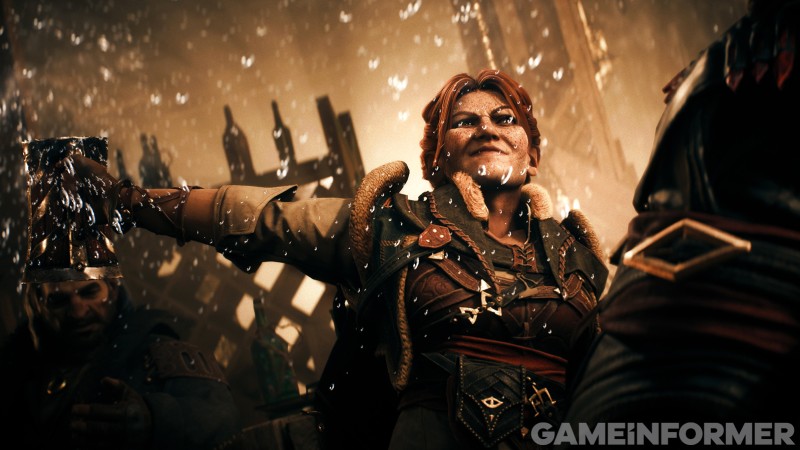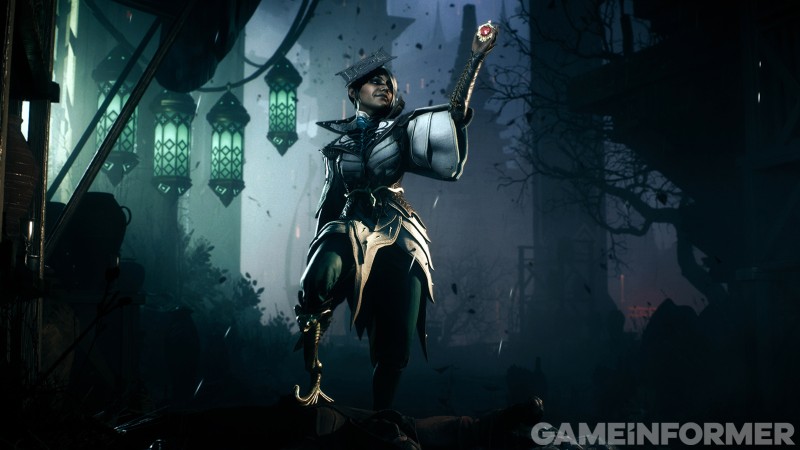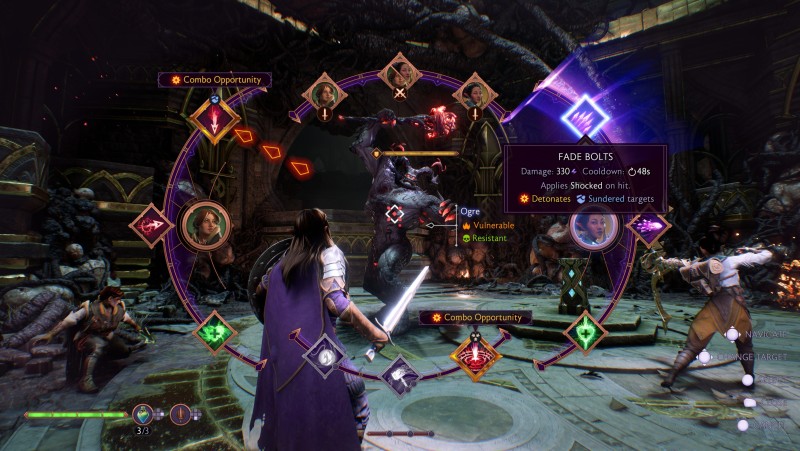When I visited BioWare at its Edmonton, Canada office earlier this year for the Game Informer In the cover story for Dragon Age: The Veilguard, I heard a sentiment echoed throughout the day by the game’s makers: In previous Dragon Age games, BioWare has stumbled upon great companions, but with Veilguard, this is the first game where the studio feels like it’s deliberately and intentionally created great companions. As such, these companions are essential to everything that happens in Veilguard.
With such a focus on these characters, I spoke to some of the game’s leads to learn more about BioWare’s philosophy regarding companions in Veilguard.
“No, it is,” BioWare CEO Gary McKay tells me when I ask him if he agrees with that sense of accomplishment. “I would start with Dragon Age. Every entry in that franchise is different, so we didn’t set out to make a game that was a sequel or the same as the last one. We really wanted to do something different, and we pushed the envelope in a number of areas, companions being one of them. Once we dove into it, we really realized we had something special with these companions, again, around motivations, around the story arc, and they really started to become the centerpiece of this game.”
The Philosophy Behind Dragon Age: Companions of the Veilkeeper

Game director Corinne Busche agrees, adding that Veilguard’s companions are “the most complex companions we’ve ever created.” She also thinks they’re the best in the Dragon Age series. “They’re complicated, they have complicated problems, and that’s what’s interesting,” she continues. “As much as I love the companions and the journeys I’ve taken with them in previous Dragon Age titles, before, I felt like the companions were going on adventures with me, the main character, whether it was the Hero of Ferelden or Hawke, whoever. But in Veilguard, in many ways, the companions are so fleshed out that I feel like I’m going on a journey with them. I’m exploring their thinking and feeling, helping them work through their problems. We’re working on their unique character arcs. They’re like my dear friends, and I absolutely adore them.”
Busche explains that these companions participate in the darkest and most optimistic parts of the game. “We’ve really gotten to a point where you can experience the highest, most colorful, most optimistic highs, but also the lowest, where things get more difficult, painful, quite dark. But throughout all of that, there’s a sense of optimism. And that creates a delightful thread throughout the game.”
When I ask creative director John Epler what BioWare’s philosophy is behind Veilguard’s companions, he reveals a phrase the studio uses: Dragon Age is about characters, not causes.
“What that means for us is that… let’s take the Grey Wardens as an example. The Grey Wardens are an interesting faction, but they don’t tell a story in and of themselves, but there are characters within that faction that do,” he tells me. “And it’s the same with other characters in the story. They represent those factions, they show the face of other parts of Thedas and the story that we really want to tell, which, again, shows Thedas as this big, diverse, living world where things are happening when you’re not there.”

Epler explains that one of BioWare’s principles when creating Veilguard was that the world exists even when you—Rook—are not there. There are things, ancient conflicts, grudges, and more, that are happening even when Rook isn’t involved, he says.
“In some of these characters, you’re coming in ‘in media res,’ so that’s what we wanted to go for with the companions,” he explains. “They each have their own story. How can Rook come into those stories, and in what interesting ways can those stories develop, not only in terms of themselves, but also in terms of Rook being in them?”
Matt Rhodes, art director for the Dragon Age series, adds that companions are the backbones of everything that happens in Veilguard. “When you’re designing them, it’s not just about designing a character; they’re the face of their faction, the face of, in some cases (like Bellara Lutara), an entire area of the world.” In his role as the game’s art director, who’s been at the forefront of Veilguard’s companion development, he tells me that Veilguard’s characters are (hopefully) going to give cosplayers a hard time.
“The previous art director thought we had to make cosplayers’ lives easier, which is a misunderstanding of cosplayers,” Rhodes says. “We saw the kinds of challenges they’re willing to take on, and so we went for, in some cases, a level of complexity and detail that I hope will make them want to take on the challenge.”
A little detour: Neve Gallus

Companions, in and out of combat

Rook’s companions in Veilguard have roles to play in and out of combat, but since I’ve only seen a few hours of the game (which will likely last several dozen hours), I wanted to ask Busche about those roles and how they play out. Here’s what I learned:
In combat
Bushce: “Companions as realized characters, so we have to take that into account when we talk about how they present themselves in combat. They’re people in their own right. They have their own behaviors, they have their own autonomy on the battlefield, they’ll choose their own targets. As their storylines progress, they’ll learn to use their abilities more competently, and it really feels like you’re fighting alongside these realized characters in combat. I love that, I love the believability of that story. It feels like we’re all in this together.”
“But then when it comes to strategy, and progression I might add, that’s where the sense of teamwork comes into play as the leader of this group as Rook. When I open the ability wheel, it almost feels like we’re banding together. We’re building a game plan together. I see all of Harding’s abilities, and I see everything Bellara is capable of, and sometimes I’ll use vulnerabilities synergistically. Maybe I’ll slow down time with Bellara so I can unleash devastating attacks with Harding, knocking the enemy down, and then me as Rook, rushing in and capitalizing on this setup that they’ve created for me. It’s a game about creating that organic sense of teamwork.”
“There are more explicit synergies now. We have intentional combos where your companions can play off each other, you can queue abilities between them, and each of those abilities will trigger and have their effect. But what that does is it creates a massive detonation where you get buffed effects, weaken the entire battlefield, all through planning and teamwork. What’s really cool is that you can also bring Rook into that equation. One of my favorite things to do is buff some of Harding’s abilities so that she automatically uses some of these abilities that I would normally have to ask her to do. And she’ll actually set my character up to do that combo which, again, has that detonation effect.”
External combat
bushes: “This is one of my favorite topics. I’ve talked about the idea that these are fully realized characters, that they’re very authentic and relatable. So outside of combat, that means they’re going to have their own concerns, fears, distractions, and even their own sanctuaries, their own personal spaces. In our base of operations this time, our player hub, the Lighthouse, each of the companions has their own room. And what I love about that room is that it becomes a reflection of who they are. The more time you spend with them, the more the game develops and the more you progress through their arc, the more their room and their personality will evolve and blossom and become more complete as they trust you more and you understand them better.
“What’s interesting is that you mentioned romance, companions develop romantically as well and I’m not just talking about the main character Rook; I’m talking about both of them. There are times in the game where two of our companions have fallen in love with each other and I’ve had to make some pretty tough choices in terms of the quest we’re on. And it broke my heart, it absolutely did (Editor’s Note:I feel like Busche is talking about a specific part of Veilguard here – not a definitive sequence of events for each part).
“So I would say that when you go on adventures with them, when you come back to the lighthouse and you get to know them, all of these decisions and conversations and things that you learn about them, you bond with them in a way that I honestly never had before. And sometimes it fills me with joy and sometimes it breaks my heart.”
For more on the game, including exclusive details, interviews, video features, and more, click the Dragon Age: The Veilguard center button below.